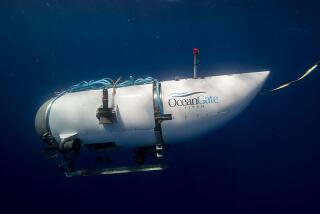Sarah Burke, freeskier, in critical condition; extreme sports too risky?
- Share via
Sarah Burke, the Canadian freeskier who crashed during training on the halfpipe in Park City, Utah, is reportedly in a coma.
Burke is “intubated and sedated,” according to a University of Utah Health Care physician interviewed by ESPN. Her prognosis is still unknown, but Burke’s condition is putting the spotlight on serious injuries in the world of extreme sports.
Snowboarder Kevin Pearce sustained a head injury at the same location while he was training for the 2010 Olympics.
Although extreme-sport injuries get considerable media attention, are extreme athletes truly at higher risk than more mainstream athletes? Are freeskiers more in jeopardy than downhill skiers or luge competitors? That’s tough to determine because injury statistics for extreme sports aren’t thoroughly tracked and studies on injuries are few and usually sport-specific.
Dr. Thomas Hackett, an orthopedic surgeon and sports medicine specialist at the Steadman Clinic in Vail, Colo., said he’s noticed that for some extreme winter sports, the challenges and tricks have gotten tougher: “The halfpipes are 22 feet tall now,” he said, “and a few years ago they were 18 feet tall, and before that, 16 feet. It’s part of the progression of the sport. If you look at someone like Sarah Burke or Jen Hudak, the girls who really started the sport, they were for years doing tricks and maneuvers that almost no one else in the world was doing.”
But now, Hackett added, the competition is younger and they’re taking those tricks to another level. “It’s progressing almost at a logarithmic rate.”
Although athletes may be driving the trend of going bigger, they are well aware of the risks -- and none of them want to be injured. They take every precaution, wearing helmets and training and practicing maneuvers over and over. Hackett, head team physician for U.S. Snowboarding, said recently he’s seen snowboarders working with air bags -- the type firefighters use to rescue people -- to practice landings. “This allows them to practice without the consequences of landing on snow or ice,” he said, one example of how the sport is increasing its focus on safety.
But professional and elite athletes aren’t the only ones doing tricks -- so is the public, inspired by what they see at live or on televised events. Terrain parks offer the average skier or snowboarder a chance to use rails, halfpipes and walls for various maneuvers. And yes, some people are getting injured.
“They put a lot of time and effort into safety with those parks,” Hackett said, but he’s also seeing a lot of injuries because of them. “The musculoskeletal injuries we’re seeing are pretty bad sometimes: tears, tibia fractures and shoulder dislocations. I think there’s a certain amount of responsibility that lands on your lap when you do something like that,” he added, “but things happen really quickly in there and I’m not sure everyone knows how quickly a severe injury can occur.”
Studies on extreme sports injuries are few and far between, but Hackett says researchers are getting up to speed and analyzing data on athletes to see how injuries can be prevented. A halfpipe is now part of his biomedical research facility to examine knee injuries.
There were about 446,788 sports-related head injuries that were treated at hospital emergency rooms in the U.S. in 2009, according to an American Assn. of Neurological Surgeons study that used data from the U.S. Consumer Product Safety Commission. That’s up 95,000 from the year before, and most mainstream sports, such as cycling, baseball, water sports and basketball saw increases in injury rates.
Head injuries have become a major focus of sports injuries, both for extreme and mainstream athletes, since they are thought to cause a number of problems, including depression, impulse control issues, memory loss and confusion. Scientists are currently studying the brains of former athletes to better understand the effects of serious head trauma.
More to Read
Go beyond the scoreboard
Get the latest on L.A.'s teams in the daily Sports Report newsletter.
You may occasionally receive promotional content from the Los Angeles Times.






